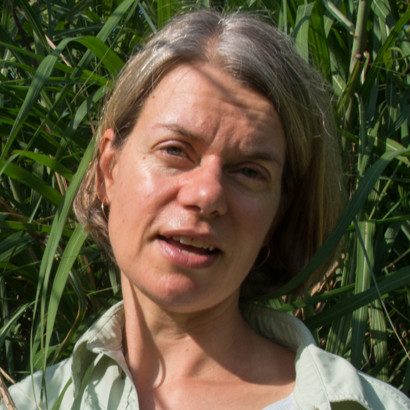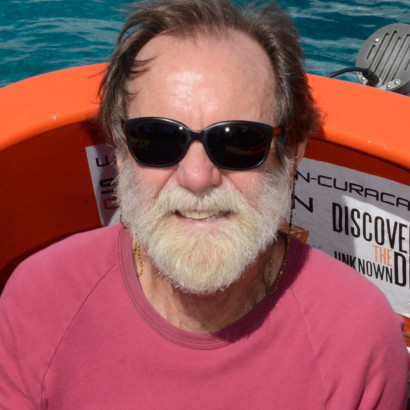B.S in Botany, University of Yaoundé I, Cameroon 1987
MAITRISE ÈS SCIENCE, University of Yaoundé I, Cameroon 1988
DOCTORAT 3e CYCLE in Plant Systematics, University of Yaoundé I, Cameroon 1995
PH.D. (Ecology, Evolution and Systematics), University of Missouri-St. Louis, USA 2008
Baldeck C.A., Dalling J.W., Kembel S.W., Harms K.E., Yavitt J.B, John R., Valencia R., Navarrete H., Bunyavejchewin S., Kiratiprayoon S., Davies S., Chuyong G., Kenfack D., Thomas D., Vallejo M., Madawala S., Adzmi Y., Supardi Md.N.N. 2013. Phylogenetic signal in soil resource niches of tropical trees. Proceedings of the Royal Society B: Biological Sciences 280, 1753.
Parmentier I., Duminil J., Kuzmina M., Philippe M., Thomas D.W., Kenfack D., Chuyong G.B., Cruaud C. & Hardy O.J. 2013. How effective are DNA barcodes in the identification of african rainforest trees? PloS one 8, e54921
De Cáceres M., Legendre P., Valencia R., Cao M, Chang L-W, Chuyong G., Condit R., Hao Z., Hsieh C.-F., Hubbell S., Kenfack D., Ma K., Mi X., Noor M.N.S., Kassim A.R., Ren H., Su S.-H., Sun I.-F., Thomas D., Ye W., & He F. 2012. The variation of tree beta diversity across a global network of forest plots. Global Ecology and Biogeography 21: 1191–1202.
Kenfack D. 2011. Cassipourea atanganae sp. nov., a new species of Rhizophoraceae from Lower Guinea. Adansonia 33: 209 – 213.
Kenfack D. 2011. A synoptic revision of Carapa (Meliaceae). Harvard papers in Botany 16: 171 – 231.
Duminil J., Kenfack D., Viscosi V., Grumiau L. & Hardy O.J. 2011. Testing species delimitation in sympatric species complexes: the case of an African tropical tree, Carapa spp. (Meliaceae). Molecular Phylogenetics and Evolution 62: 275 – 285.
Parmentier I., Harrigan R.J., Buermann W., Mitchard E.T.A., Saatchi S., Malhi Y., Bongers F., Hawthorne W.D., Leal M.E., Lewis S.L., Nusbaumer L., Sheil D., Sosef M.S.M., Affum-Baffoe K., Bakayoko A., Chuyong G.B., Chatelain C., Comiskey J.A., Dauby G., Doucet J.-L., Faucet S., Gautier, Gillet J.-F., Kenfack D., Kouamé F.N., Kouassi E.K., Kouka L.A., Parren M.P. E., Peh L. K.S.-H., Reitsma J.M., Senterre B., Sonké B., Sunderland T.C.H., Swaine M.D., Tchouto M.G. P., Thomas D.W., Van Valkenburg J. L.C.H. & Hardy O.J. 2011. Predicting alpha diversity of African rain forests: models based on climate and satellite-derived data do not perform better than a purely spatial model. Journal of Biogeography 38: 1164 –1176.
Chuyong G.B., Kenfack D., Harms K.E., Thomas D.W., Condit R. & Comita L.S. 2011. Habitat specificity and diversity of tree species in an African wet tropical forest. Plant Ecology 212: 1363 – 1374.
Kenfack D. 2011. Carapa vasquezii (Meliaceae) a new species from western Amazonia. Brittonia: 63: 7 – 10.
Kenfack D. & Peréz A. 2011. Two new species of Carapa (Meliaceae) from Western Ecuador. Systematic Botany 36: 124 – 128.
Kenfack D. 2011. Resurrection in Carapa (Meliaceae): a reassessment of morphological variation and species boundaries using multivariate methods in a phylogenetic context. Botanical Journal of the Linnean Society 165: 186 – 221.
Weber N., Birnbaum P., Forget P.-M., Gueye M. & Kenfack D. 2010. L’huile de carapa (Carapa spp., Meliaceae) en Afrique de l’Ouest: utilisations et implications dans la conservation des peuplements naturels. Fruits 65: 343 – 354.
DeWalt S.J., Schnitzer S.A., Chave J., Bongers F., Burnham R.J., Cai Z., Chuyong G., Clark D.B., Ewango C.E.N., Gerwing J.J., Gortaire E., Hart T., Kenfack D., Macía M.J., Makana J.-R., Ibarra-Manríquez G., Martínez-Ramos M., Sainge M., Muller-Landau H.C., Parren M.P.E., Parthasarathy N., Pérez-Salicrup D.R., Putz F.E., Romero-Saltos H. & Thomas D. 2010. Annual rainfall and seasonality predict pan-tropical patterns of liana density and basal area. Biotropica 42: 309 – 317.
Forget P-M., Poncy O., Thomas R.S., Hammond D.S. & Kenfack D. 2009. A cryptic new species of Carapa Aublet (Meliaceae) from Central Guyana. Brittonia 64: 366 – 374.
Kenfack D. & Dick C.W. 2009. Isolation and characterization of 15 polymorphic microsatellite loci in Tetragastris panamensis (Burseraceae), a widespread neotropical forest tree. Conservation genetic resources. 1: 385 – 387.
Morlon H., Chuyong G.B., Condit R., Hubell S., Kenfack D., Thomas D.W., Valencia R., & Green J., 2008. A general framework for the distance-decay of similarity in ecological communities. Ecology Letters 11: 904 – 917.
 blue
Hector M. Guzman
blue
Hector M. Guzman










